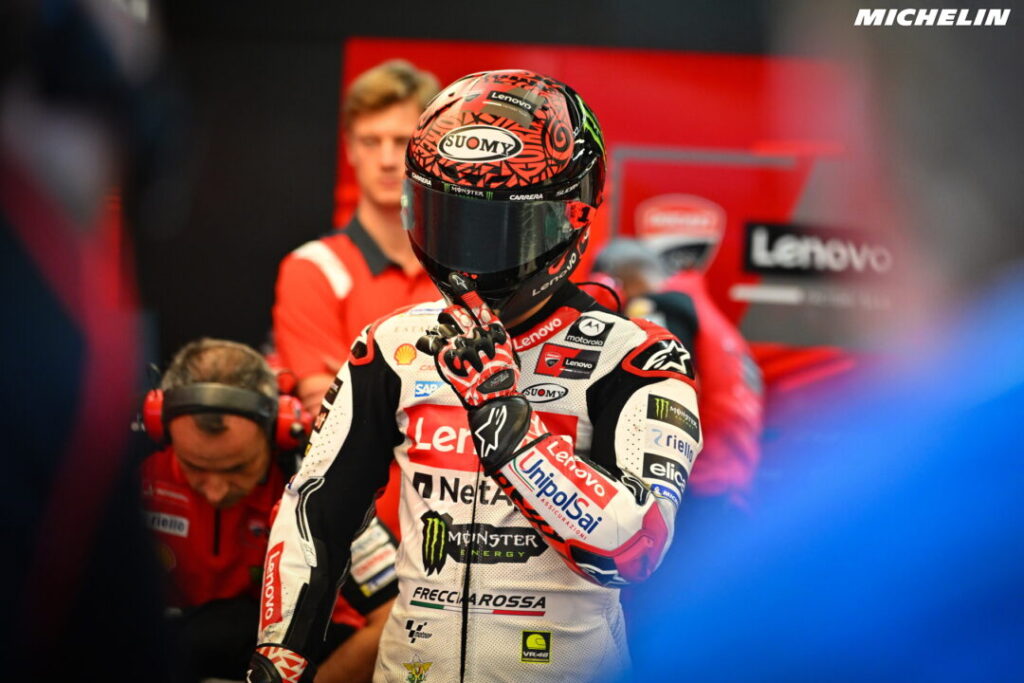Alex Marquez Tops Post-Season Test as Marc Marquez Joins Factory Ducati
Alex Marquez tops MotoGP's Barcelona test, while Marc Marquez shines in his Ducati debut. Honda rookies and new team signings…
Ducati’s Michele Pirro tested MotoGP’s first two-way radio system at the Barcelona test, exchanging live messages with team manager Davide Tardozzi.

Ducati and MotoGP took another step toward introducing radio communication in racing during Tuesday’s official test at the Circuit de Barcelona-Catalunya. Michele Pirro, Ducati’s test rider, trialed a two-way intercom system developed by Dorna Sports.
The system, installed in the Italian’s helmet, enabled Tardozzi to communicate live via a headset with an in-built microphone.
During the first hour of testing, Pirro completed several outings on bikes prepared for Francesco Bagnaia and Marc Márquez, receiving instructions and providing feedback without returning to the garage.
Observers noted Tardozzi frequently adjusting his headset to listen and respond to Pirro. Earlier trials this year only involved one-way, pre-recorded messages sent to riders’ helmets.
While Michele Pirro took the main part of the work, other Ducati riders were given a quick trial as well. Pecco Bagnaia expressed mixed opinions about the system.
“It’s still not ready. I couldn’t hear anything, and it was disturbing. The cable is huge and could be dangerous. It needs more work before it’s race-ready.”
Safety remains a critical concern. Any widespread introduction would only occur after extensive testing and once riders feel comfortable with the technology. MotoGP confirmed no plans to implement such systems for the 2025 season.
Alex Marquez tops MotoGP's Barcelona test, while Marc Marquez shines in his Ducati debut. Honda rookies and new team signings…
The radio system is mainly being designed to improve on-track safety. Riders could receive warnings about on-track hazards or communicate issues directly to race direction, potentially reducing risks and speeding up the decision-making process for race control.
While for now only communication between riders and race control is the goal, it is not far-fetched to see more use cases of the system in the future. Situations like Jorge Martin’s pit stop during this year’s San Marino GP, where rain strategy played a crucial role, highlight the potential advantages of such technology.
Martin, who switched bikes prematurely due to light rain, could have sought input from his team through this system, potentially altering his decision. Similarly, quick communication about track conditions or strategy could mitigate risks during chaotic flag-to-flag and wet races.